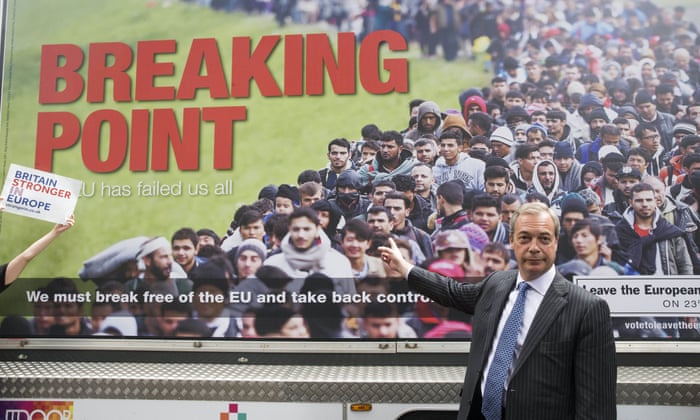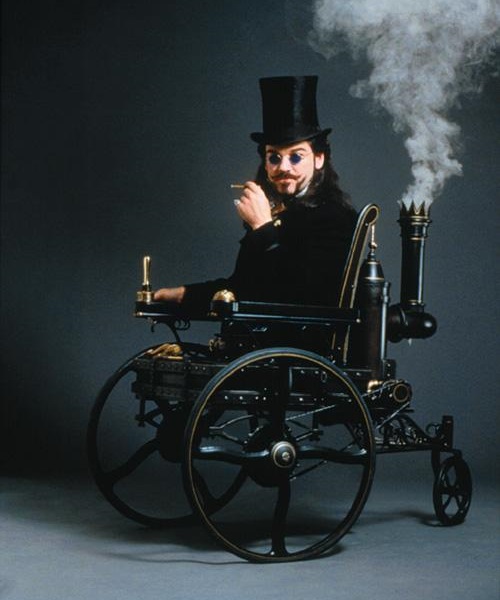Hirschhorn divides his thesis into ten points, which I will now summarise in turn.
Malaised
Miserable Ramblings about Art and the Contemporary Malaise
Friday, 28 February 2020
Doing Art Politically (A Summary)
Hirschhorn divides his thesis into ten points, which I will now summarise in turn.
Tuesday, 11 February 2020
Why Leaving the EU is not Inherently Racist
The main argument against the accusation goes like this: 17.4 million people voted to leave the EU; how can Remain voters possibly know all of their motives? A subsidiary argument questions whether that many Britons (representing 52% of the country) are really racist. It is inconceivable that Remainers could know the motives of half the country (and no substantial research has been carried out), so they then concede that "not all Leave voters are racist, but all racists voted Leave". Let us analyse this oft repeated slogan. If "all the racists" voted Leave, then all Remain voters are necessarily not racist.
Freedom of Movement
1. Turning the Mediterranean into a "Cemetery for Refugees"
When Remain voters declare that they are not racist because they support freedom of movement, it is worth remembering that freedom of movement only applies to citizens from EU member states. What about the rights of non-EU citizens? Donald Trump's wall is rightly condemned as racist, but the EU already has its "wall" in the form of a sea. While migrants and refugees drowned in the Mediterranean sea, the EU (as an institution) did nothing. This led Turkey's president to accuse the EU of turning the Mediterranean into a "cemetery for refugees".
2. EU Failure to Share Refugees (once they are on EU soil).
During the migrant crisis, the EU left individual member States to act (alone). This led to the farcical situation where Greece (one of the EU's poorer countries and currently in severe financial difficulties) was left to process huge numbers of refugees - with no help from its EU family. Germany was one of the few countries to come out of the situation with any credit. Angela Merkel acted independently of the EU and against popular opinion to welcome in more than 1 million refugees. This led to a situation where Budapest’s Keleti railway station became overwhelmed with refugees bound for Germany - creating a scene reminiscent of Jews being forcibly put onto trains bound for concentration camps. Was this a case of freedom of movement (the refugees can go where they like), or a case where the refugees had to go to Germany, because nobody else wanted them? The evidence points to the latter, as Hungary was also allowed to reject all asylum requests at its border and in the Czech Republic the police wrote numbers on refugees hands. Far right governments in Poland, Austria and France all took measures to "protect" their boarders and limit migrants' ability to enter their counties: the EU failed to stop all this.
3. The EU-Turkey Migrant Deal.
 |
| The body of Alan Kurdi, September 2015 (Turkey) |
The first three examples focus on how the EU restricts migration from outside its borders. This alone casts doubts about the credibility of claims that a vote to remain within the EU is inherently non-racist. How, you might ask, is preventing the freedom of movement of non-European black and brown people who are often Muslims progressive? This is to assume that the EU allows freedom of movement for its mainly white, Christian, European citizens, but this is not necessarily the case, as the next examples make clear.
4. Bulgaria and Romania
Many people are surprised to hear that Bulgaria and Romania joined the EU in 2007. This is because the EU put restrictions on their freedom of movement that were not lifted until 2014, leading many people to falsely believe that these countries joined the EU then (rather than in 2007). The policy was driven by the fear of mass immigration from poorer countries into richer ones. The very principle of EU freedom of movement comes with restrictions. This policy discriminated against 29 million people based on their country of origin, regardless of their individuals' wealth. Discriminating against people based on where they come from seems like racism. The argument here is that EU freedom of movement was not universal between 2007-2014, and yet "EU Freedom of Movement" is lauded as a reason why Remain voters are not racist.5. The Collective Deportation of Roma people
Why are Remain voters necessarily not racist?
Vote Leave was Racist

It is Possible to Vote Leave for Reasons Unrelated to Immigration and Racism
Monday, 11 November 2019
Why people are unemployed?
 |
Francis Alÿs. Turista (1994)
|
perhaps as teachers or journalists. They also enrich society by their being able to think and live differently to those for whom full time work occupies so much of their time and effort.
Tuesday, 5 November 2019
Lacan's Gaze: A Summary
The Gaze in Film and Art
Monday, 28 October 2019
Umberto Eco on Interpretation and Over-interpretation: A Summary
To add to this article, or to challenge Malaised's account of the text, please leave a comment below.
Overview
Interpretation and History
Overinterpreting Texts
Between Author and Text
References
Sunday, 15 September 2019
Chitty Chitty Bang Bang (or the narcissism of Caractacus Potts)
Chitty Chitty Bang Bang is a film about a father of two young children whose mother has died. The father, Caractacus Pott, (Dick Van Dyke), is an apparently independently wealthy inventor who doesn't believe in playing by the rules - although he is not rich, he wouldn't consider working for anybody else, and owns property and some land in an unspecified idyllic village, for example).
The Potts children (Jeremy and Jemimah) don't go to school - that would run contra to Pott's fiercely independent streek. He prefers for them to learn through play. He does not homeschool them; rather, they run about unsupervised... left to their own devices.
One day they encounter Truly Scrumptious (the female character who will eventually become their surrogate mother) . Scrumptious is appalled that Potts lets his children runaround unsupervised, and she is fearful for their safety when she nearly runs them over. The father however has no such concerns. He believes that a little danger is no bad thing in a child's upbringing and that they will learn to care for themselves rather than being suffocated by a mollycoddling nanny State.
Scrumptious and Potts become friends and take the children to the beach. From this point on on Chitty Chitty Bang Bang is a dreamlike fantasy. Scrumptious learns that, far from being the uncaring father that she assumed him to be, Potts is a deeply devoted parent. He has endless patience, time and love for his children. They learn through imaginative play with him. For example, they fantasize about seeing a pirate ship just off the coast. The idyllic world of learning through play quickly becomes darker, when they travel to the land of Vulgaria where a mad ruler, Baron Bomburst, has banned children, so that he alone can have all the toys.
Bomburst employees a sinister Child Catcher who runs around imprisoning children in a cage on the back of his cart.
The film concludes when the Potts family join forces with a toymaker (Benny Hill) to free all the children imprisoned by the Baron and fly home in their magical flying car.
It is noteworthy that the evil child-snatching baron story is Potts' invention. The Child Catcher personifies Potts' fear of losing his children, just as he has lost his wife. The Child Catcher is the darker side of Potts' personality. Far from rescuing his children from the boredom of a life at school, he is like a narcissist who wants to keep his children close, to serve his own ends. Their infantile fascination with his many failed or commercially unviable inventions makes him feel important and provides him with an audience 24/7. As is common with people suffering from narcissistic personality disorder, his children really serve to make him feel more important and to alleviate his fear of being left alone. At the same time, paradoxically, he is far from over-protective. Once the children are out of sight, they are out of mind and only of interest to their father once he has need for their attention.
Therefore, Chitty Chitty Bang Bang can be read as a warning about the potentially self-serving motives behind home schooling.
Thursday, 1 August 2019
Steam Punk & Colonial Nostalgia
 |
| Asylum Steampunk Festival (Lincoln 2019) |
If you walk around the streets of Lincoln during the annual Asylum Steampunk Festival (the largest and longest running steampunk festival in the world), you will hear that the steampunks – easily identifiable by their dress – speak in many different languages. While the appeal of steampunk has certainly broadened its horizons, one cannot help but feel that it is most warmly received by white Europeans, nostalgic for empire.
Clad in pith helmets, these intrepid explorers lament that America has overtaken the European powers to become the dominant global superpower. Steampunks long for a return to the good old days of European supremacy that were only ever possible because of colonisation. Steampunk as a fantasy where Europeans continue to dominate the world using (new) pre-digital technologies. Outsourcing labour leaves Europeans with a nostalgia for the days when they could actually make and repair things. Nostalgia is evident in the dressing up (not just literature) – people want to have a go at living this alternative reality. |
| Dr Arliss Loveless |
